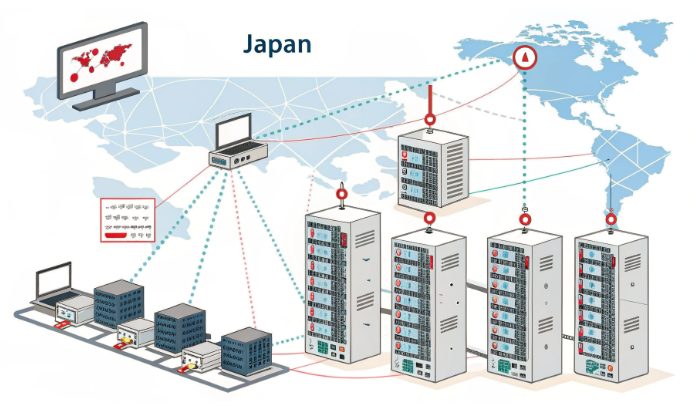How to Employ Japan Servers for Cross-Border Live Streaming

Introduction: The Technical Imperative of Japanese Servers
For tech professionals orchestrating cross-border live streams, Japanese servers offer unique network advantages. Their geographic proximity to key Asian markets reduces latency, while compliance with regional data frameworks ensures legal integrity. This deep-dive explores how to architect, deploy, and optimize server setups tailored for high-concurrency streaming across borders, focusing on technical principles over specific configurations.
Server Infrastructure Strategy: Aligning Architecture with Scale
Effective server selection begins with understanding traffic patterns and operational requirements. Here’s a framework for evaluating infrastructure types:
Cloud Hosting for Agile Operations
- Ideal for startups needing rapid deployment and resource elasticity
- Containerization support enables seamless scaling of streaming microservices
- Pay-as-you-go models reduce upfront investment for testing new markets
Colocation Servers for Enterprise-Grade Performance
- Dedicated hardware for brands handling large concurrent audiences or daily streaming
- Redundant systems minimize downtime during peak broadcast windows
- Customizable configurations to meet specific performance benchmarks
Network and System Level Optimizations
Strategic configuration is essential to unlock a server’s full streaming potential.
Network Stack Enhancement
- Implement edge caching via regional CDN nodes to reduce origin server load
- Deploy SSL certificates for end-to-end encryption, improving security and SEO
- Optimize TCP parameters for high-concurrent connections and low latency
Server OS and Software Tuning
- Lightweight Linux distributions offer optimal performance for streaming workloads
- Web server configurations to enhance concurrent connection handling
- Rate limiting mechanisms to prevent bandwidth exhaustion from traffic spikes
Building the Live Streaming Architecture
Architecting a robust pipeline requires mastering server-side configurations and streaming protocols.
Self-Hosted Streaming Solutions
- Install media servers supporting RTMP/RTSP/HLS protocols for versatile streaming
- Source encoding configurations for optimal video quality-to-bandwidth ratio
- Reverse proxy setups with WebSocket support for low-latency chat integration
Third-Party Platform Integration
- Secure tunneling for pushing streams to regional platforms while maintaining control
- Load balancing between endpoints to avoid platform-specific downtime
- Server-side transcoding for adaptive bitrate streams across network conditions
Advanced Streaming Engineering
Minimizing latency and ensuring reliability are critical for mission-critical broadcasts.
Low-Latency Streaming Techniques
- WebRTC-based streaming for sub-100ms latency in interactive experiences
- UDP-based protocols to reduce handshake latency for real-time interactions
- Edge server deployments to shorten last-mile delivery to global audiences
High Availability Architectures
- Active-active server clusters with automatic failover mechanisms
- Real-time monitoring systems for immediate alerting on performance anomalies
- Warm standby configurations for instantaneous failover scenarios
Regional Compliance and Data Protection
Operating in Japan requires strict adherence to local regulations and content standards.
Legal and Regulatory Considerations
- Server infrastructure compliance with local data protection frameworks
- Data residency policies for user-generated content storage
- Content moderation workflows aligned with regional advertising standards
Security Hardening for Compliance
- Firewall configurations to restrict non-essential incoming connections
- Encryption protocols for storage volumes containing sensitive data
- Regular security audits to meet international compliance standards
Performance Tuning Principles
Continuous optimization maintains streaming quality as audience规模 grows.
Key Performance Indicators (KPIs)
- First Byte Time (FBT) for optimal viewer engagement
- Buffering Rate metrics to prevent viewer drop-off
- Server load thresholds during peak broadcast periods
Optimization Workflows
- A/B testing on encoding parameters for quality-bandwidth balance
- Dynamic bitrate adaptation based on real-time network quality
- Traffic shaping to prioritize streaming traffic on the server
Case Studies: Real-World Architecture Outcomes
Analyzing implementations provides insights into effective server strategies.
- An electronics brand reduced Tokyo latency significantly by deploying a local colocation server with CDN integration
- A fashion retailer mitigated buffering issues through WebRTC-based streaming on Japanese infrastructure
- A brand improved conversion rates by optimizing servers for interactive high-definition streaming with low latency
Frequently Asked Technical Questions
Addressing common challenges in Japanese server deployments.
- What’s the optimal server approach for large concurrent audiences?
Dedicated hardware with redundant systems and traffic shaping capabilities. - How to mitigate latency for global audiences?
Global CDN networks paired with Japanese origin servers for content aggregation. - Can Japanese servers support real-time multilingual translation?
Yes, by integrating server-side translation APIs with low-latency streaming pipelines.
Conclusion: Japanese Servers as a Strategic Technical Foundation
For tech teams aiming to lead in cross-border live streaming, Japanese servers offer network proximity, regulatory compliance, and technical scalability. From initial architecture to ongoing optimization, the right infrastructure enables low-latency experiences, supports large audiences, and ensures legal compliance. Treating server architecture as a strategic asset allows tech professionals to build streaming ecosystems that exceed user expectations in global e-commerce. The future of cross-border live streaming belongs to those who master regional server deployments—starting with the robust foundation of Japanese infrastructure.

